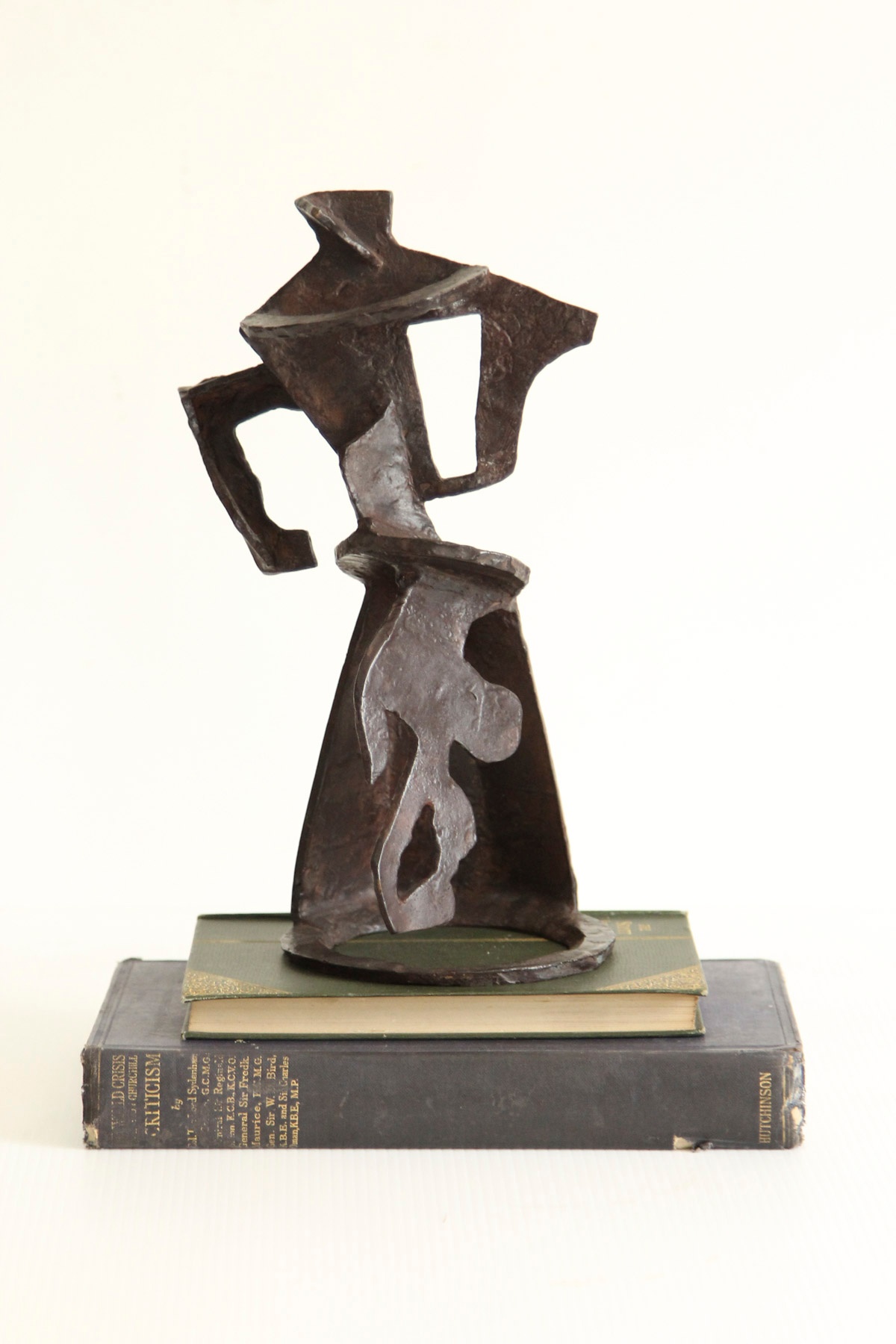William Kentridge

The coffee pot – or Bialetti – belongs to the lexicon of Kentridge’s work, which includes other such image-words, among them Bakelite phones, black cats, ampersands and reel-to-reel film cameras. These objects recur so often in the artist’s images and sculptures that they appear less as themselves than as obscure signs. The utility of the coffee pot is all but forgotten, its likeness reduced to visual cue; a formal device of uncertain significance. In Kentridge’s Universal Archive (Twelve Coffee Pots) (2012), he draws the image of the pot twelve times in quick succession on pages torn from dictionaries and encyclopaedias. Described in ink, the image dissolves into calligraphic scrawls. This object, he seems to suggest, is a part of the language, a written sign much like any other. Here, the sign takes a three-dimensional – if imperfect – form. However abstracted it appears, it still retains its recognisable image, its coffee pot-ness, like a word spoken over a bad phone line, indistinct yet discernible.
b.1955, Johannesburg
Performing the character of the artist working on the stage (in the world) of the studio, William Kentridge centres art-making as primary action, preoccupation, and plot. Appearing across mediums as his own best actor, he draws an autobiography in walks across pages of notebooks, megaphones shouting poetry as propaganda, making a song and dance in his studio as chief conjuror in a creative play. Looking at his work, a ceaseless output and extraordinary contribution to the South African cultural landscape, one finds a repetition of people, places and histories: the city of Johannesburg, a white stinkwood tree in the garden of his childhood home (one of two planted when he was nine years old), his father (Sir Sydney Kentridge) and mother (Felicia Kentridge), both of whom contributed greatly to the dissolution of apartheid as lawyers and activists. The Kentridge home, where the artist still lives today, was populated in his childhood by his parents’ artist friends and political collaborators, a milieu that proved formative in his ongoing engagement with world histories of expansionism and oppression throughout the 20th century. Parallel to – or rather, entangled with – these reflections is an enquiry into art historical movements, particularly those that press language to unexpected ends, such as Dada, Constructivism and Surrealism.
Moving dextrously from the particular and personal to the global political terrain, Kentridge returns to metabolise these findings in the working home of the artist’s studio, where the practitioner is staged as a public figure making visible his modes of investigation. Celebrated as a leading artist of the 21st century, Kentridge is the artistic director of operas and orchestras, from Sydney to London to Paris to New York to Cape Town, known for his collaborative way of working that prioritises thinking together with fellow practitioners skilled in their disciplines (for example, as composers, as dancers). Most often, he is someone who draws, in charcoal, in pencil and pencil crayon, in ink, the gestures and mark-making assured. In a collection of books for which A4 acted as custodian during the exhibition History on One Leg, one finds 200 publications devoted to Kentridge’s practice. In the end, he has said, the work that emerges is who you are.